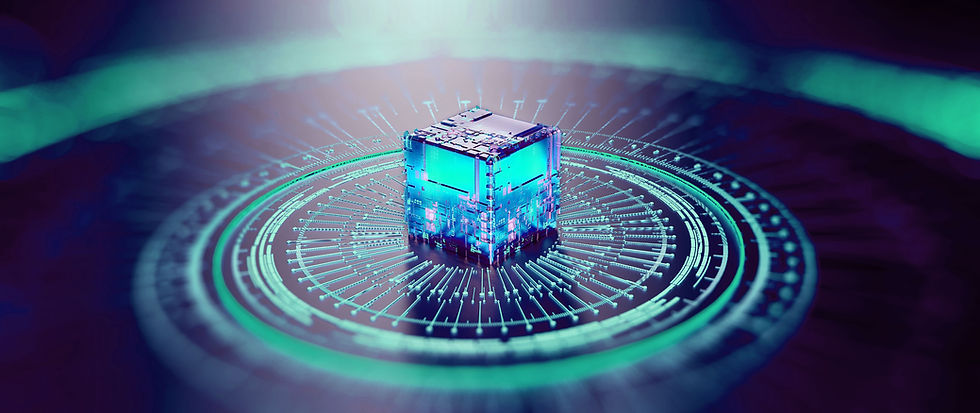CAD-CAM Integration: The Key to Boosting Manufacturing Efficiency
- 77 Teknik

- Aug 26
- 4 min read

Why CAD-CAM Integration Matters
In modern manufacturing, efficiency is no longer optional, it’s essential. The seamless connection between Computer Aided Design (CAD) and Computer Aided Manufacturing (CAM) ensures that product ideas move smoothly from concept to production.
At 77 Teknik, we leverage CAD-CAM integration to minimize errors, reduce lead times, and deliver highprecision components across industries.
What Is CAD-CAM Integration? A Seamless Bridge from Design to Production
CAD/CAM integration is a cornerstone of modern manufacturing. Let's take a deeper look at these two technologies and why their integration is so crucial.
a- CAD (ComputerAided Design): From Idea to Digital Model
CAD is the use of software to create precise 2D drawings and 3D solid models of a product, part, or assembly. This is much more than just a digital drawing. A model created in a CAD environment is essentially a virtual prototype of the product, containing critical information such as:
Geometric Data: The exact shape, dimensions, holes, angles, and surfaces of the part.
Tolerances and Material Information: Critical data specifying how precisely the part must be manufactured and the material it will be made from.
Assembly Relationships: If it's a multipart product, this defines how all the individual components fit together.
In short, CAD transforms an idea or concept into a measurable and manufacturable digital blueprint.
b- CAM (ComputerAided Manufacturing): From Digital Model to Physical Product
CAM takes the digital model created in CAD and translates it into a language that manufacturing machines (typically CNC - Computer Numerical Control machines) can understand. This process involves the following steps:
Toolpath Generation: The CAM software analyzes the CAD model and calculates the optimal paths for the cutting tool to follow to remove material. This is like creating a GPS route for the machine, dictating its every move, speed, and sequence.
Code Generation (G-code): These calculated toolpaths are then converted into G-code, a set of commands that CNC machines understand. This code gives the machine specific instructions like "move to this X/Y/Z coordinate," or "spin the spindle at this RPM."
CAM essentially combines the designer's digital model with the expertise of a machinist to generate the most efficient manufacturing instructions.
c- Integration: Breaking Down the Wall Between Design and Production
In the past, the design (CAD) and manufacturing (CAM) processes were completely separate. A designer would finish a drawing, save it as a file, and send it to the production department. A manufacturing engineer would then have to import that file into their separate CAM software, often dealing with compatibility issues, data translation errors, or even having to redraw parts of the design. This "wall" between departments led to significant delays and costly errors.
Integrated CAD-CAM systems tear down this wall. Today, CAD and CAM often operate as modules within the same software package or are designed to communicate flawlessly. The most significant revolution this brings is associativity.
Associativity means this: When a designer makes a change to the CAD model (for example, increasing the diameter of a hole), that change automatically updates the corresponding toolpaths in the CAM environment. This eliminates the need to reprogram the part from scratch every time there is a design revision.
Key Advantages of an Integrated System:
Eliminates Data Translation Errors: Because design data is transferred automatically, issues like data loss, misinterpretation, or manual entry errors are completely removed. The physical part produced is a perfect match for the digital design.
Increases Speed and Efficiency: Thanks to associativity, design changes are reflected in the manufacturing plan almost instantly. This dramatically shortens the time needed for prototyping and moving into full production.
Lowers Costs with Simulation: Modern integrated systems allow you to simulate the entire machining process on a computer before sending the code to the machine. This virtual runthrough can detect potential tool collisions, inefficient paths, or errors, preventing costly machine crashes and wasted raw material.
Enables Better and More Innovative Designs: When designers can instantly see the manufacturing implications of their changes (e.g., how a new feature affects machining time), they are empowered to experiment and create more efficient and innovative products. This tight feedback loop between design and manufacturing fuels innovation.
In summary, CAD/CAM integration is a technological revolution that digitally connects the designer's office to the machine shop floor. It establishes a seamless workflow that results in manufacturing that is faster, less expensive, and of higher quality.

New Developments in CAD/CAM Software
Recent advancements have taken CAD-CAM systems far beyond simple design and machining:
AI-Powered Automation – AI algorithms now optimize toolpaths, feeds, and speeds automatically.
Cloud Based CAD/CAM – Collaborative platforms allow engineers and machinists to work in real time from different locations.
Digital Twin Integration – CAD/CAM models can be directly linked to digital twins for virtual testing.
Generative Design – AI-driven design suggestions create lighter, stronger, and more efficient parts.
Additive + Subtractive Hybrid CAM – Support for both 3D printing and CNC machining in one environment.
77 Teknik’s CAD/CAM Applications
Application Area | CAD/CAM Integration Benefits |
CNC Machining | Direct CAD to CAM toolpath generation for higher accuracy. |
Complex Assemblies | Reduced rework by simulating fits and tolerances before production. |
Error Prevention | Early detection of clashes, tool collisions, and design flaws. |
Rapid Prototyping | Fast design to production with automated machining setups. |
Innovation Projects | Using generative design and simulation for aerospace and medical parts. |
77 Teknik: Driving Innovation with CAD/CAM
At 77 Teknik, we see CAD/CAM not just as a tool but as a strategic enabler of smart manufacturing. By adopting the latest software developments, we deliver:
Shorter production cycles
Optimized machining performance
Reliable, high quality parts for aerospace, automotive, and medical industries
Our engineers integrate CAD, CAM, and digital twin technology to create a fully connected design to production pipeline.
Let’s Upgrade Your Production with CAD/CAM
Looking to improve efficiency and reduce errors in your production?



